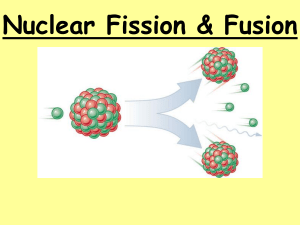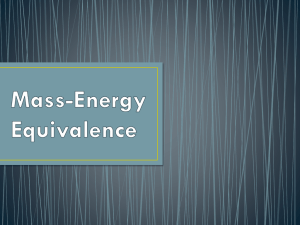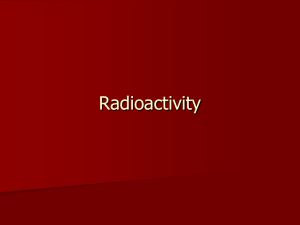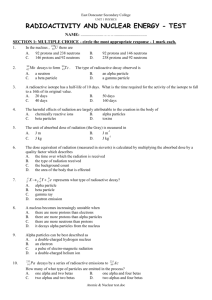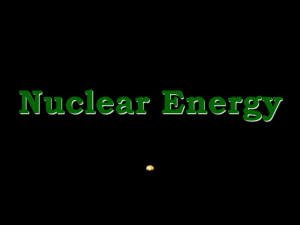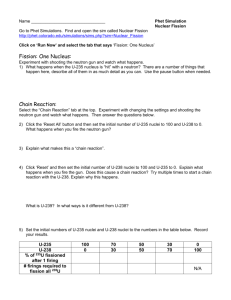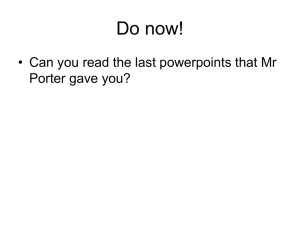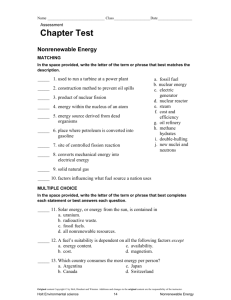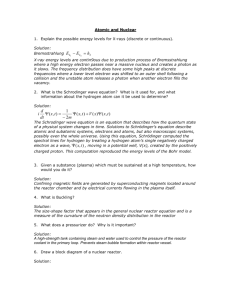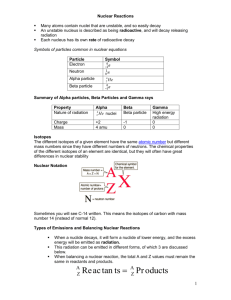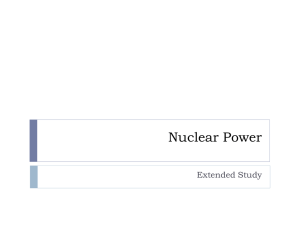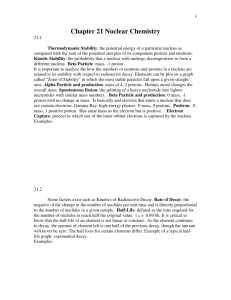P2 7 Nuclear Physics - answers
advertisement
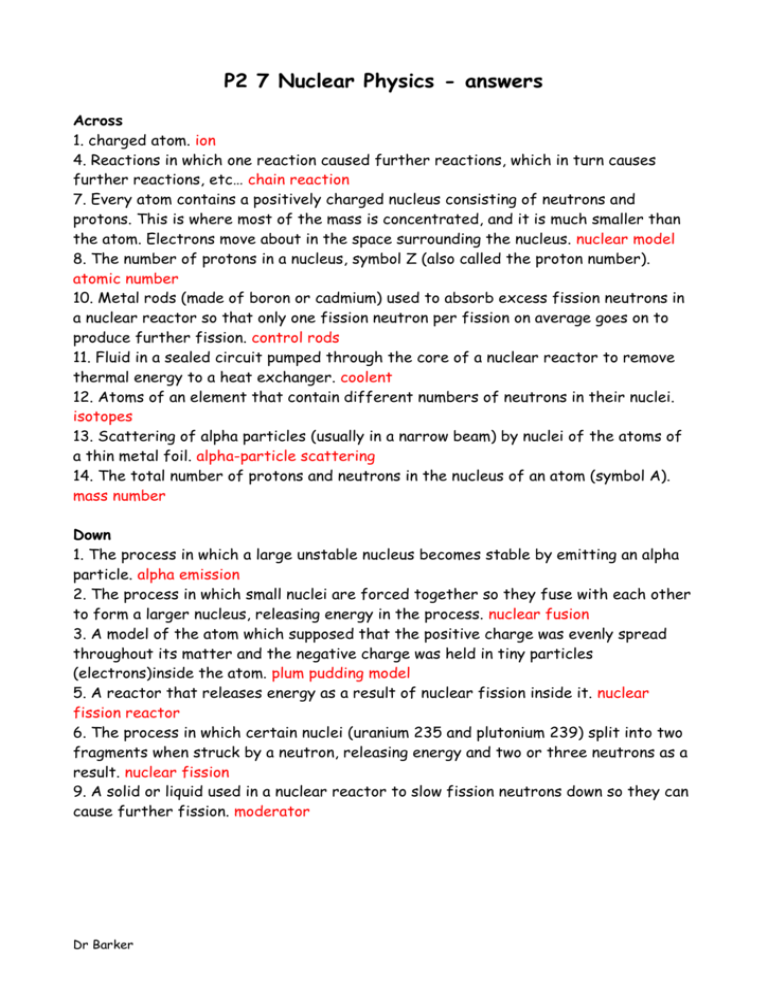
P2 7 Nuclear Physics - answers Across 1. charged atom. ion 4. Reactions in which one reaction caused further reactions, which in turn causes further reactions, etc… chain reaction 7. Every atom contains a positively charged nucleus consisting of neutrons and protons. This is where most of the mass is concentrated, and it is much smaller than the atom. Electrons move about in the space surrounding the nucleus. nuclear model 8. The number of protons in a nucleus, symbol Z (also called the proton number). atomic number 10. Metal rods (made of boron or cadmium) used to absorb excess fission neutrons in a nuclear reactor so that only one fission neutron per fission on average goes on to produce further fission. control rods 11. Fluid in a sealed circuit pumped through the core of a nuclear reactor to remove thermal energy to a heat exchanger. coolent 12. Atoms of an element that contain different numbers of neutrons in their nuclei. isotopes 13. Scattering of alpha particles (usually in a narrow beam) by nuclei of the atoms of a thin metal foil. alpha-particle scattering 14. The total number of protons and neutrons in the nucleus of an atom (symbol A). mass number Down 1. The process in which a large unstable nucleus becomes stable by emitting an alpha particle. alpha emission 2. The process in which small nuclei are forced together so they fuse with each other to form a larger nucleus, releasing energy in the process. nuclear fusion 3. A model of the atom which supposed that the positive charge was evenly spread throughout its matter and the negative charge was held in tiny particles (electrons)inside the atom. plum pudding model 5. A reactor that releases energy as a result of nuclear fission inside it. nuclear fission reactor 6. The process in which certain nuclei (uranium 235 and plutonium 239) split into two fragments when struck by a neutron, releasing energy and two or three neutrons as a result. nuclear fission 9. A solid or liquid used in a nuclear reactor to slow fission neutrons down so they can cause further fission. moderator Dr Barker








